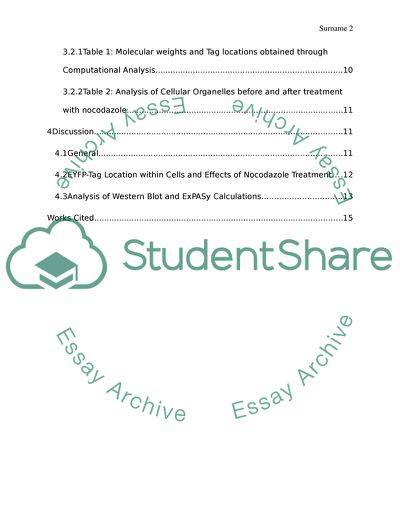Cite this document
(Analysis of Chimeric Proteins by Fluorescence Microscopy and Western Blotting Lab Report Example | Topics and Well Written Essays - 2500 words, n.d.)
Analysis of Chimeric Proteins by Fluorescence Microscopy and Western Blotting Lab Report Example | Topics and Well Written Essays - 2500 words. https://studentshare.org/biology/1846810-analysis-of-chimeric-proteins-by-fluorescence-microscopy-and-western-blotting
Analysis of Chimeric Proteins by Fluorescence Microscopy and Western Blotting Lab Report Example | Topics and Well Written Essays - 2500 words. https://studentshare.org/biology/1846810-analysis-of-chimeric-proteins-by-fluorescence-microscopy-and-western-blotting
(Analysis of Chimeric Proteins by Fluorescence Microscopy and Western Blotting Lab Report Example | Topics and Well Written Essays - 2500 Words)
Analysis of Chimeric Proteins by Fluorescence Microscopy and Western Blotting Lab Report Example | Topics and Well Written Essays - 2500 Words. https://studentshare.org/biology/1846810-analysis-of-chimeric-proteins-by-fluorescence-microscopy-and-western-blotting.
Analysis of Chimeric Proteins by Fluorescence Microscopy and Western Blotting Lab Report Example | Topics and Well Written Essays - 2500 Words. https://studentshare.org/biology/1846810-analysis-of-chimeric-proteins-by-fluorescence-microscopy-and-western-blotting.
“Analysis of Chimeric Proteins by Fluorescence Microscopy and Western Blotting Lab Report Example | Topics and Well Written Essays - 2500 Words”. https://studentshare.org/biology/1846810-analysis-of-chimeric-proteins-by-fluorescence-microscopy-and-western-blotting.


